The American sculptor Clark Mills (1810–1883) had never personally seen Andrew Jackson or an equestrian statue when he designed and built his famous monument to Old Hickory. Employing his self-taught metallurgy and engineering skills, Mills was able to create a statue in which Jackson’s horse stood balanced on its hind legs without toppling—an unprecedented artistic feat at the time. Twenty thousand people came to see the unveiling of Mills’s Jackson statue on January 8, 1853, in Washington, DC’s Lafayette Square. Senator Stephen A. Douglas addressed the crowd, and Mills pulled himself up on the horse’s forelegs to demonstrate the sturdiness of his design.
In 1856 a second version of Mills’s famous statue was erected in New Orleans’s historic Place d’ Armes, which had been renamed Jackson Square in anticipation of the monument. The finished statue’s inauguration drew thousands of onlookers to the very place where General Jackson had reviewed his troops in 1814. More than one hundred and sixty years later, the famous statue still salutes visitors to Jackson Square and is one of New Orleans’s most enduring and recognizable landmarks.
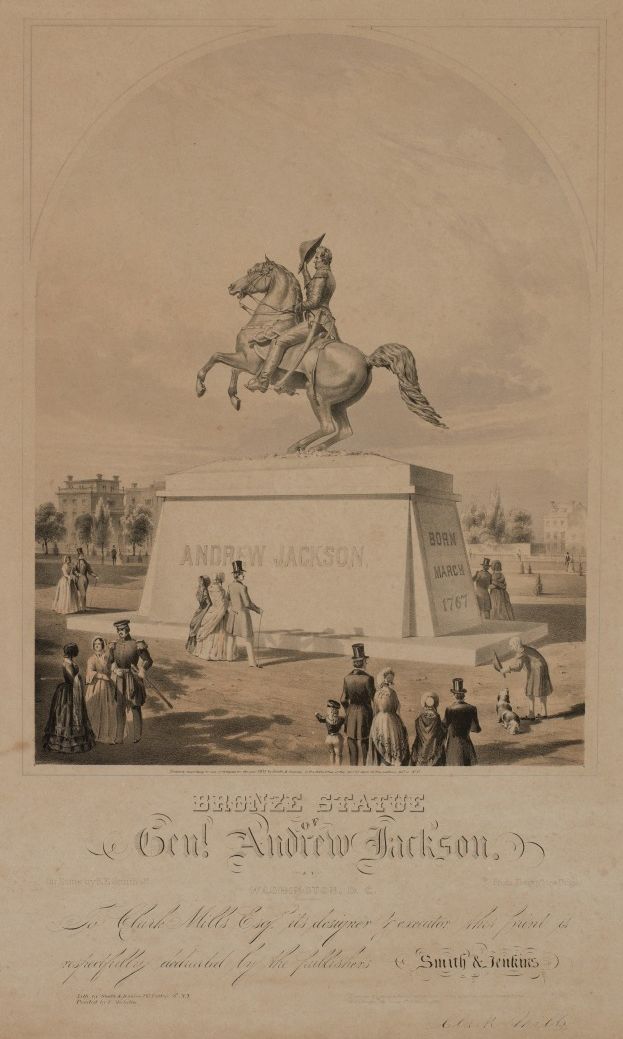
The Bronze Statue of Andrew Jackson at Washington, D.C.
1853; lithograph with watercolor
by Benjamin F. Smith, lithographer; Smith and Jenkins, publisher; F. Michelin, printer
The Historic New Orleans Collection, 1995.55
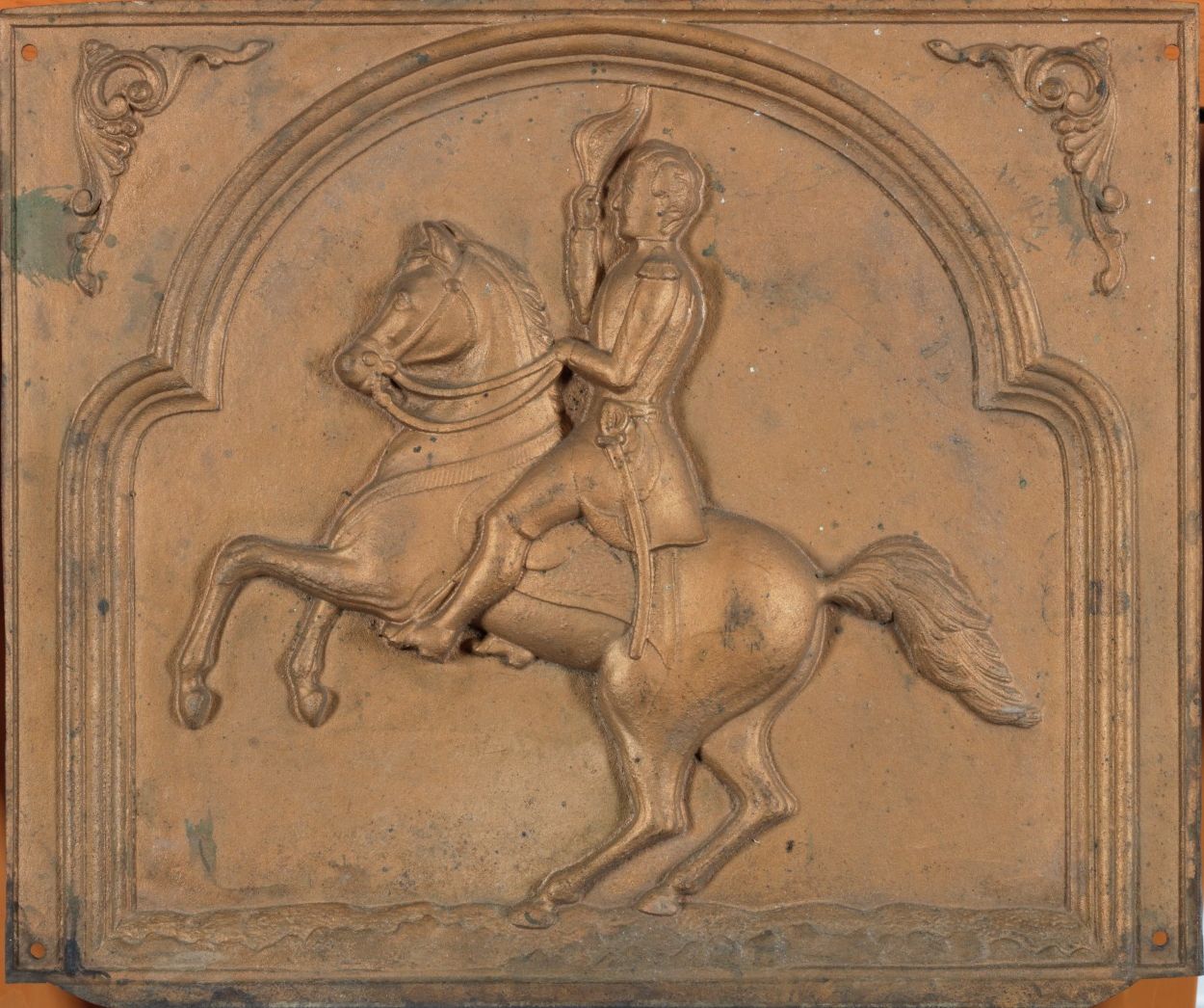
Decorative hearth or stove panel
after 1852; cast iron and gilt paint
The Historic New Orleans Collection, 2013.0032
The figure enclosed in a cusped arch and decorative floral filigrees is based on Clark Mills's statue of Andrew Jackson, the first equestrian statue created in the United States. A raised half-inch L foundry mark appears on the reverse of the panel; the maker has not yet been identified.
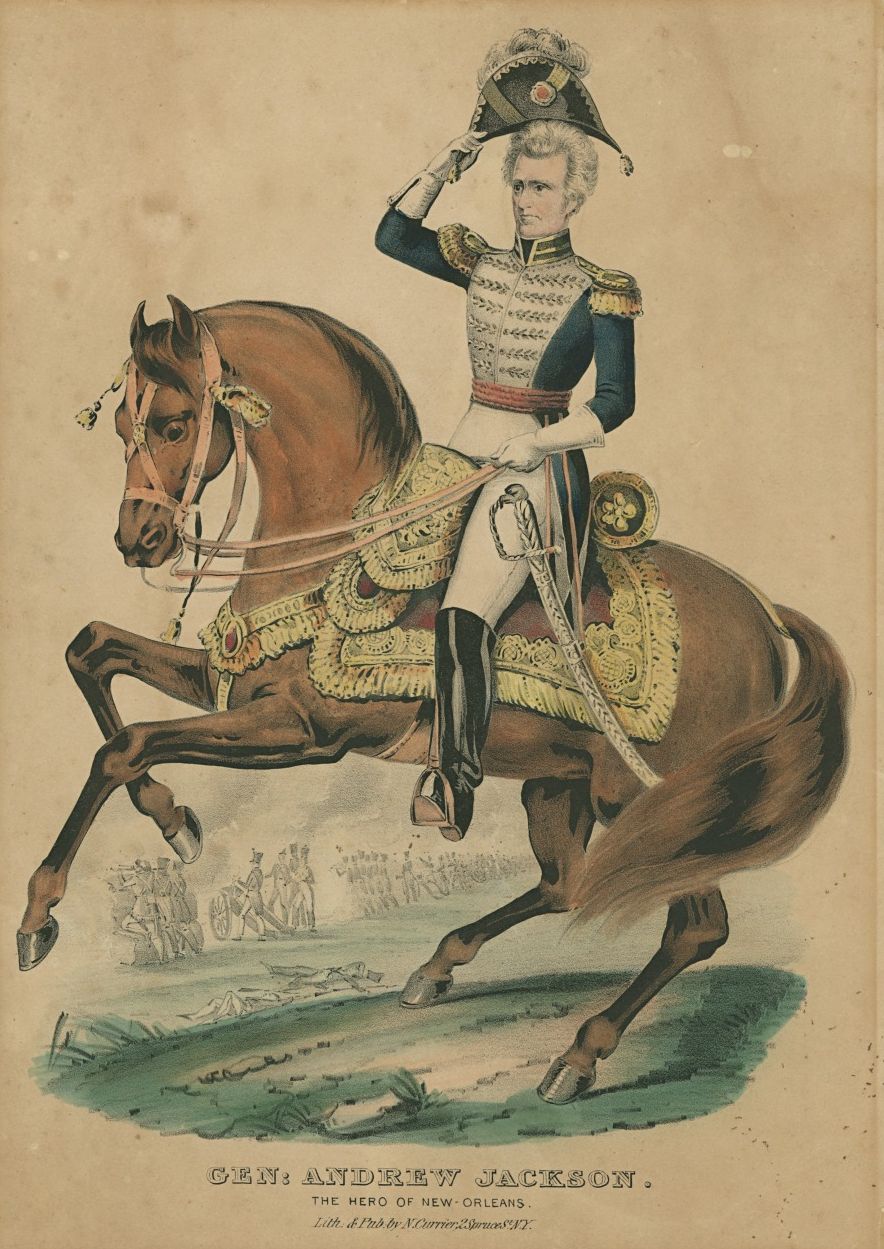
Gen. Andrew Jackson—the Hero of New Orleans
between 1828 and 1856; hand-colored lithograph
by Nathaniel Currier, lithographer
The Historic New Orleans Collection, 1975.100
The American sculptor Clark Mills had never personally seen Andrew Jackson or an equestrian statue when he designed and built his famous monument to Old Hickory. Mills may have been inspired by any of a number of popular prints depicting the Hero of New Orleans.
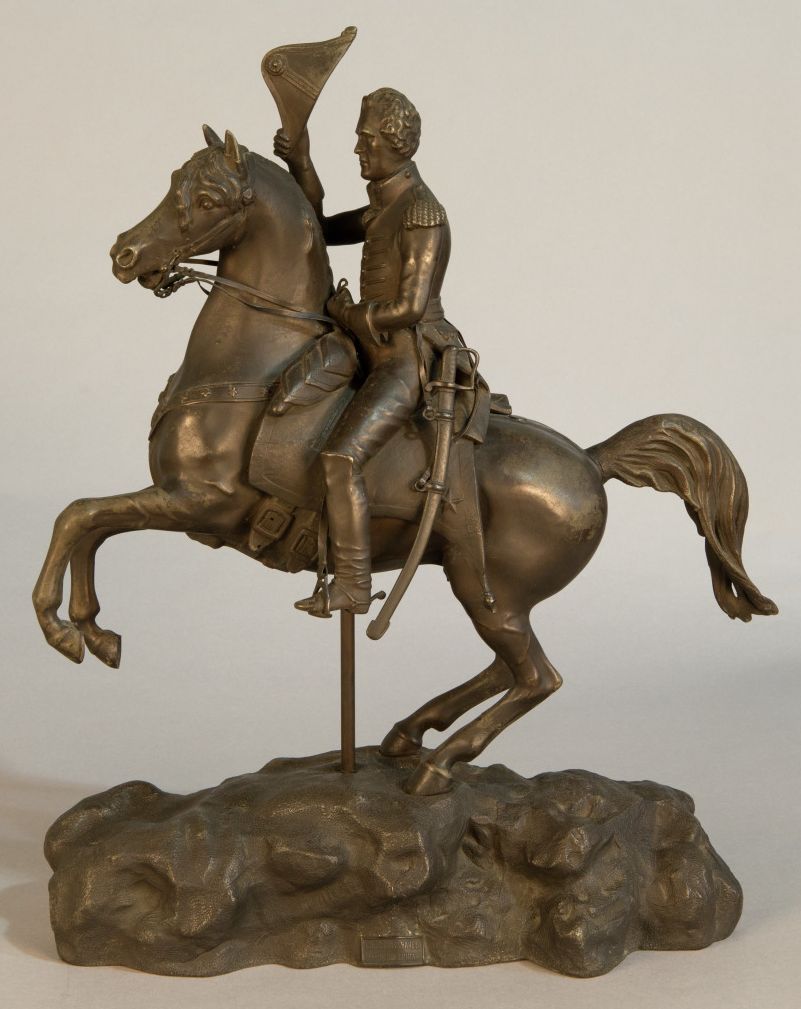
Statuette based on Clark Mills’s equestrian statue of Major General Andrew Jackson
between 1855 and 1859; cast zinc with imitation bronze paint
by Cornelius and Baker, foundrymen
The Historic New Orleans Collection, 1983.142
Clark Mills commissioned as many as two dozen statuettes from a Philadelphia foundry, perhaps as gifts for persons financing the full-scale bronze statues in Washington and New Orleans. Over twenty separately cast sections were joined with lead-tin solder and then painted. The center support on this example was added to reduce stress on the horse's legs while the object is exhibited.

Screwmen’s Benevolent Association’s Jackson Monument dedication ribbon
1856; wood engraving on silk
by Childs and Hammond, printer
The William C. Cook War of 1812 in the South Collection at The Historic New Orleans Collection, MSS 557, 2001-68-L.14
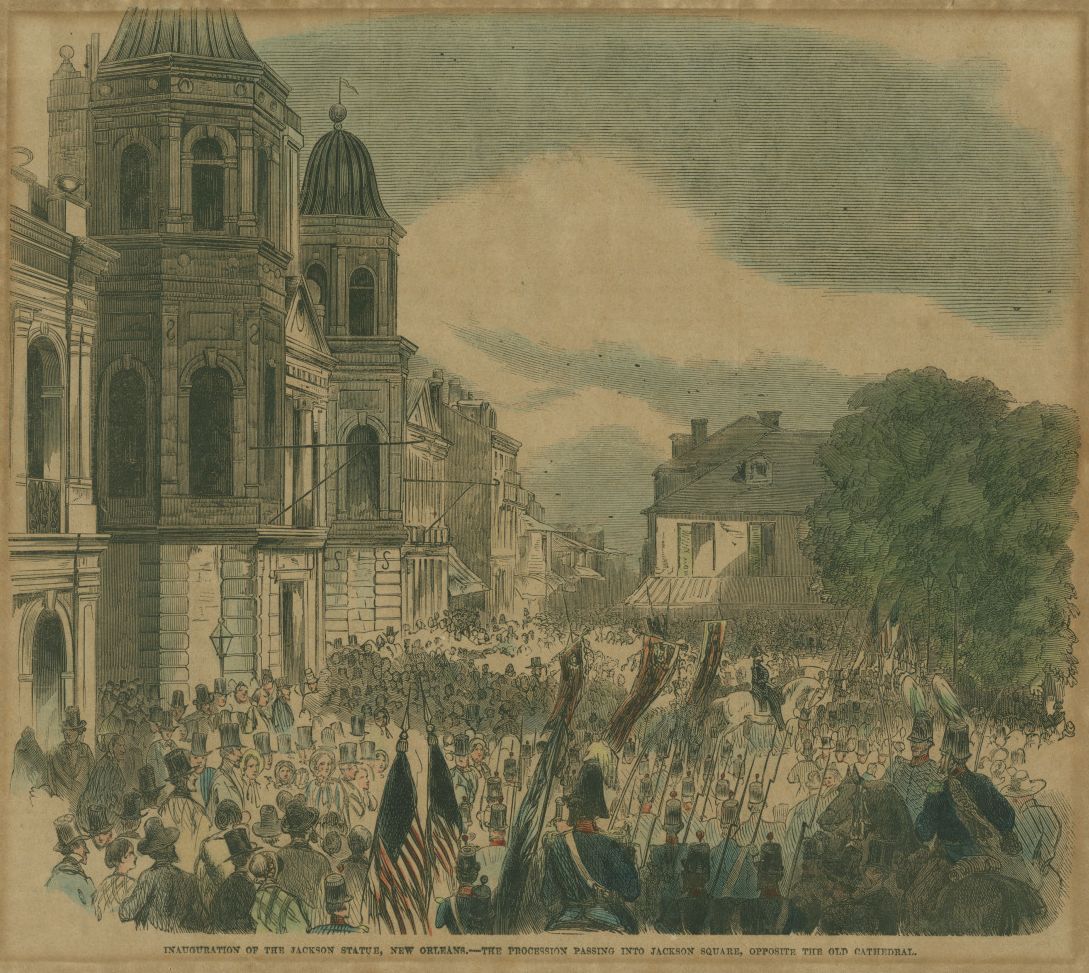
Inauguration of the Jackson Statue, New Orleans . . .
1856; wood engraving with watercolor
The Historic New Orleans Collection, bequest of Boyd Cruise and Harold Schilke, 1989.79.16.4
The newspaper artist responsible for this view copied architectural details from an 1842 lithograph by Jules Lion. By the time of the 1856 unveiling of the Jackson statue, the St. Louis Cathedral had received a new facade and towers designed by Jacques Nicolas Bussière de Pouilly (1805–1875).
